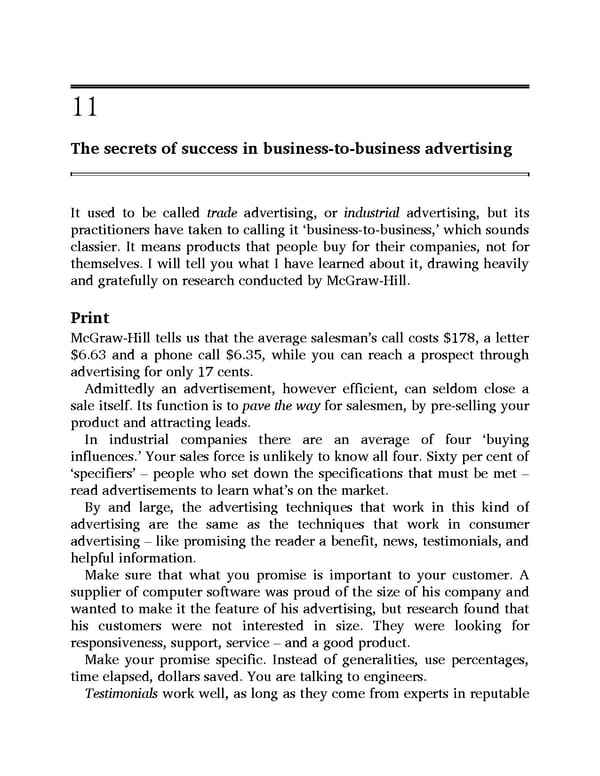1 1 The secrets of success in business-to-business advertising It used to be called trade advertising, or industrial advertising, but its practitioners have taken to calling it ‘business-to-business,’ which sounds classier. It means products that people buy for their companies, not for themselves. I will tell you what I have learned about it, drawing heavily and gratefully on research conducted by McGraw-Hill. Print McGraw-Hill tells us that the average salesman’s call costs $178, a letter $6.63 and a phone call $6.35, while you can reach a prospect through advertising for only 17 cents. Admittedly an advertisement, however efficient, can seldom close a sale itself. Its function is to pave the way for salesmen, by pre-selling your product and attracting leads. In industrial companies there are an average of four ‘buying influences.’ Your sales force is unlikely to know all four. Sixty per cent of ‘specifiers’ – people who set down the specifications that must be met – read advertisements to learn what’s on the market. By and large, the advertising techniques that work in this kind of advertising are the same as the techniques that work in consumer advertising – like promising the reader a benefit, news, testimonials, and helpful information. Make sure that what you promise is important to your customer. A supplier of computer software was proud of the size of his company and wanted to make it the feature of his advertising, but research found that his customers were not interested in size. They were looking for responsiveness, support, service – and a good product. Make your promise specific. Instead of generalities, use percentages, time elapsed, dollars saved. You are talking to engineers. Testimonials work well, as long as they come from experts in reputable
 Ogilvy on Advertising Page 197 Page 199
Ogilvy on Advertising Page 197 Page 199